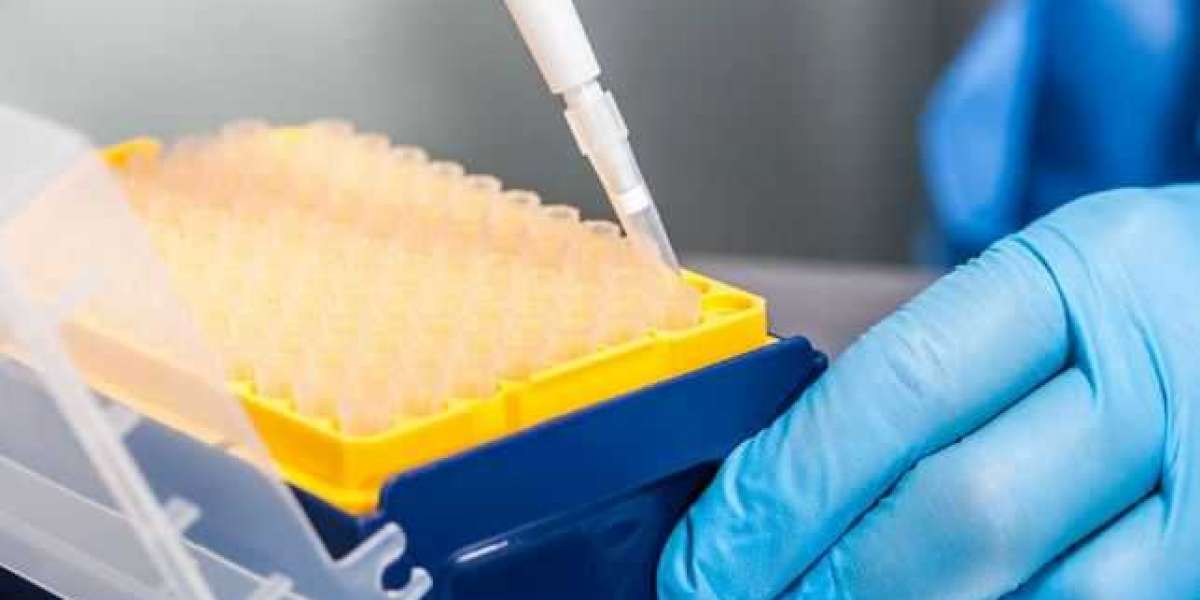Pipette tips are an essential tool for any lab that performs liquid handling. They act as an extension of the pipette, allowing users to aspirate and dispense liquids quickly and accurately. With so many sizes and types of pipette tips on the market, it can be challenging to determine which ones are best suited for your particular experiments and workflows. This article provides key considerations and a step-by-step guide to help you select high-quality, well-matched pipette tips.

Assess Your Application
The first step is to carefully evaluate the liquid handling procedures and experiments you will be performing. This involves looking at factors like:
- Sample types - The properties of your samples, such as viscosity, volume, and presence of cells or particulates, impact the ideal pipette tip. Aqueous buffers can be pipetted with most tips, while viscous samples like glycerol may require wide bore tips.
- Volumes - The volumes you routinely pipette determine the size of tips needed. Standard pipettes use tip volumes ranging from 10 to 1,250 microliters. Make sure to choose a tip that comfortably covers your maximum and minimum pipetting volumes.
- Techniques - Your protocols and methods influence tip selection. Measuring exact volumes needs high precision tips, while mixing tasks allow more flexibility. Filtered tips are a must for work with infectious agents or DNA/RNA.
- Equipment - The make and model of your pipettes dictates which tips will fit properly. Be sure to choose tips specifically designed for your pipettes. Autoclavable plastic tips should be used with mechanical pipettes.
Consider Tip Fit
An optimal tip should have a tight, secure fit on the pipette nozzle to form an airtight seal. This level of fit ensures accuracy and precision during aspiration and dispensing. Assess tip fit using these criteria:
- Snugness - There should be a slight friction fit when attaching the tip. It should not slide on loosely or require significant force.
- Seal - No air should leak from the space between the nozzle and tip. This can be checked using colored liquids.
- Attachment - Tips should smoothly connect to form a vertical orientation. Angled attachments may indicate a poor match.
- Ejection - With proper fit, used tips can be ejected with the pipette's tip ejector mechanism. Tips that stick or drop off indicate issues.
If you notice any problems with the fit, try tips from another manufacturer or size. You may need to request fit kits from vendors to sample options. Proper tip fit helps prevent errors and contamination.
Evaluate Tip Quality
In addition to fit, the quality of pipette tips affects performance. Assess the following aspects:
- Dimensional consistency - Tip openings and lengths should have minimal variation between tips in a batch. Inconsistency leads to volume errors.
- Wall thickness - Optimal thickness provides strength while allowing liquids to flow smoothly. Thin walls are prone to breakage and leakage.
- Transparency - Clear tips allow users to observe samples within and check for issues like aerosols. Colored tips can obstruct visibility.
- Purity - Tips should be free of particulate matter, discoloration, odors, and visible defects. Impurities can contaminate samples.
- Sterility - Pre-sterilized, individually wrapped tip boxes or racks help maintain sterility. Sterilization certificates from the manufacturer should be available.
- Filter - Filtered tips are essential when handling infectious, radioactive, or DNA/RNA samples. Membrane filters should have the appropriate pore size and performance.
- Precision - Manufacturing precision determines the tip's accuracy and consistency in aspirating set volumes. Precision tips have the smallest permissible variations.
Testing tips with dyes or other liquids can quickly verify quality standards are met before purchasing large batches.
Select the Right Materials
Pipette tips are produced using different types of plastics, each with pros and cons:
- Polypropylene - Autoclavable, high clarity, and very inexpensive. Can bind proteins and other biomolecules.
- Polyethylene - Withstands higher temperatures and chemicals compared to polypropylene. Low binding properties.
- ETFE (ethylene tetrafluoroethylene) - Extremely hydrophobic and resistant to nearly all chemicals. Higher cost.
- Polyethersulfone - Hydrophilic material that has low binding tendencies. Can be autoclaved.
Tips made for PCR work are often polypropylene, while low retention polyethylene or ETFE tips are ideal for protein assays. For general liquid transfers, polypropylene or polyethersulfone tips suffice for most labs.
Match Tip and Pipette Specifications
For optimal performance, the technical specifications of the tips you select should align with the pipette:
- Volume range - The tip volume range should cover the full volume range of the pipette.
- Calibration - Tips are calibrated to dispense accurately when used with specific pipette makes/models. Match the calibration.
- Tip attachment - Ensure the inner dimension of the pipette nozzle matches the tip opening for proper sealing.
- Ejection force - The pipette's tip ejector mechanism should smoothly dislodge the tip without jamming.
Consult the technical specification sheet for your pipettes and compare it to the tips under consideration. Contact manufacturers directly for guidance selecting compatible tips. Using mismatched tips and pipettes can reduce accuracy.
Choose the Right Packaging
Pipette tips are supplied in bulk packs, reloads, racked tips, and more. The optimal packaging depends on your lab's workflows. Consider:
- Workflow needs - Will tips be used at benches or loaded into an automation system? Do users share tip boxes? This impacts ideal packaging.
- Throughput - Bulk packs make sense for high throughput labs that use lots of tips daily. Lower throughput labs may prefer racks or small packs.
- Storage - Packaging should facilitate storage without contaminating tips prior to use. Racks are ideal for shelf storage.
- Sterility - Individual packaging is required to maintain sterility. For non-sterile applications, bulk bags are acceptable.
- Waste - Bulk packs generate considerable plastic waste requiring disposal. Racked tips have less waste.
- Cost - Bulk and reload packs offer the lowest per tip costs. Racked tips are more expensive per tip but provide organization.
Also, opt for packaging that fits your storage space, such as wide formats for shelf storage or narrow boxes for stacking.
Test Tips with Your Protocols
The best way to vet tips for your application is to test them with your actual pipettes and protocols. When trialing tip options:
- Assess ease of use - Do they fit your pipettes properly? Are they easy to attach and eject? Can you access volumes comfortably?
- Check accuracy/precision - Test ability to pipette your minimum and maximum volumes accurately and precisely. Compare measured volumes to expected.
- Evaluate plunger motion - Plunger should move smoothly during aspiration and dispensing. Rough movement indicates issues.
- Note tip changes - Make sure tips don't bend, leak, crack, or show other changes during use.
- Watch for issues - Look for problems like sample retention in the tip, contamination between uses, dripping, or splashing.
- Consider ergonomics - Do the tip length, opening size, and packaging facilitate comfortable prolonged pipetting?
Take detailed notes on how different tips perform to identify the optimal choice. Don't rely on a vendor's word - empirical hands-on testing is key.
Prioritize Certified Manufacturers
When sourcing Pipette Tips such as cqscopelab.com, purchase from reputable manufacturers that follow quality standards and offer documentation:
- ISO certification - Suppliers should comply with ISO 9001 or ISO 13485 certification processes to demonstrate quality management.
- FDA registration - For medical applications, tips should be produced in an FDA registered facility.
- Lot testing - The manufacturer should perform quality control tests on each lot and provide specifications.
- Certificates - Reputable vendors will provide certificates of analysis, compliance, origin, etc.
- Technical data - Tip specifications, compatibility charts, and performance data should be available.
- Audits - Labs can audit a vendor's facility and QC processes to vet their capabilities.
This documentation ensures the tips meet the highest standards for performance, quality, and consistency.
Ordering and Storage Tips
- Request samples - Take advantage of free sample offers to test options before purchasing full packs.
- Purchase multiple sizes - Keep a variety of sizes and styles on hand to accommodate diverse liquid handling needs.
- Monitor usage - Track tip usage and reorder when stocks are running low to prevent work stoppages.
- Date and organize - Label tip boxes with dates and contents for easy identification. Use shelves or bins to keep organized.
- Follow FIFO - Use a first in, first out system to rotate stock and prevent wastage from expired tips.
- Store sealed - Keep unused tips in original packaging and sealed from contaminants. Only open what is needed.
- Control humidity - Store in low humidity environments since moisture can damage packaged tips over time. Use desiccants if needed.
- Avoid sunlight - Don't store in direct sunlight or bright light, which can damage packaging and







